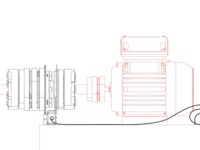Test & Inspection
Torque Testing Success
Unlock the potential of automated product torque testing.

Torque testing ensures product and device manufacturers achieve consistently high standards. Source: Mecmesin

The flow diagram here shows a typical manufacturing scenario. Central to everything is the PLC, instructing a “pick and place” system to take a sample product from the production line and load it into the torque tester which, upon instruction from the PLC, will perform the test, send the result to the SPC package and tell the PLC that the test is complete. The sample will then be removed and the process repeated - automatically. Source: Mecmesin


- Medical devices: assessing the torque of rotary luer connectors and measuring the torque of dosage selection of pen injectors.
- Packaging: testing child-resistant closures (CRC) on pharmaceutical containers, tamper-evident closures on PET bottles.
- Automotive: measuring the force needed to open rotary controls and switches.
Looking for a reprint of this article?
From high-res PDFs to custom plaques, order your copy today!







